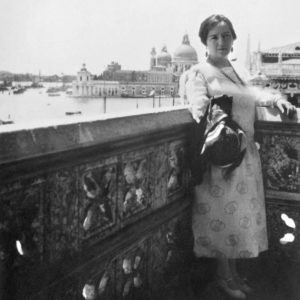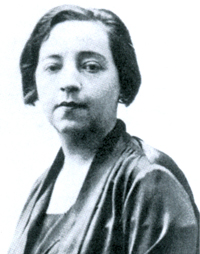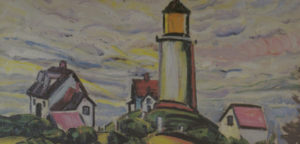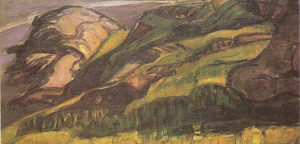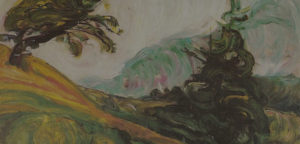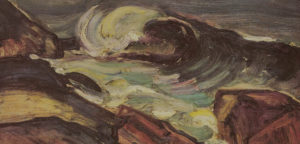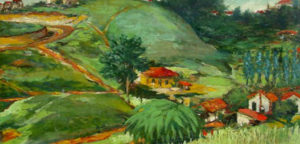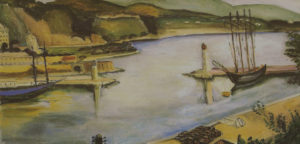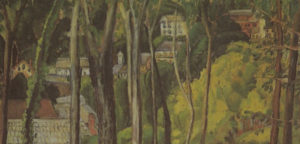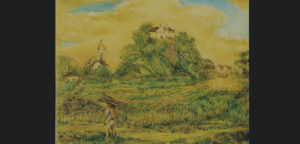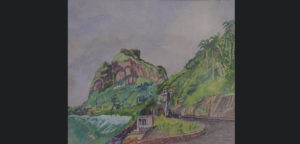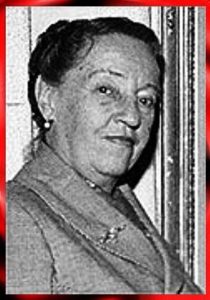Anita Malfatti was born on December 2, 1889 in Sao Paulo, Brazil.
1889 - 1964
Anita Malfatti
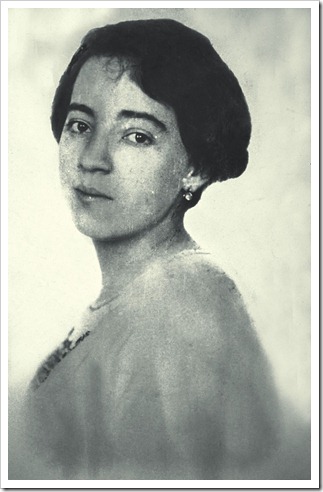
description
A Brazilian artist, one of the leaders of Brazilian avant-garde painting.
She was the second daughter of an Italian engineer and American B. Krug, an art teacher who initiated the artistic and cultural education of her youngest daughter. The future artist was born with atrophy of the right hand. Three-year-old Anita was sent to Lucca (Italy) to correct the defect, but to no avail. The girl learned to draw with her left hand under the guidance of American teacher Marcia Brown.
The exhibition of 53 paintings by the artist in 1917 is the first in the history of the fine arts of this country, where works in the style of expressionism with elements of cubism and other latest trends were presented. She was the organizer of the landmark festival “Week of Art”, a member of the progressive art group “Five”.
Key ideas:
– Innovative artist Anita Malfatti had been preparing herself for a creative career since childhood. Her talent, inherited from her mother and supported by her, was revolutionary not only for the small Brazilian town of São Paulo at that time, but for her native country as a whole. This was demonstrated by the first solo exhibition of the artist, which she held, after returning from training in Europe and America, where she worked side by side with Expressionists and Cubists. She conscientiously tried to avoid a scandal by not including male nudes in the exhibition and exposing her works to “local” topics. She deliberately reworked the work – “Tropical Fruits” to the exhibition – softened bright colors, minimized the use of abstract forms and so on. Moreover, she included the works of her colleagues in the opening day to emphasize: she, the quote, “is not the only a person who paints in this style, unfamiliar to you, this is a new, modern art, which many accept and experiment further”. However, Brazilian criticism was merciless – without the historical context of predecessors, such as Cezanne and the Fauvists, without other exhibitors “with the name”, her bold, sharp and expressively distorted compositions created a confrontation with everything that happened before that time.
– Bright colors applied with fast, gestural and free strokes were identified as daub. The artist applied on the canvas a lot of bright colors that reflect emotion and dynamism, which is typical of the expressionist style, the origins of which lie in the work of Claude Monet, Vincent van Gogh, Edward Munch. The most courageous in a form were the portraits, for which she chose ordinary people as models — often immigrants who had recently arrived in America. The “yellow man” is squeezed into a limited space; both of his hands are cut off by a frame; the whole posture of his body reveals tension. The man, although he put on a tie, does not look presentable. The general depression is emphasized by dark eyes under the outlines of thick eyebrows – two rounded accents. Without the comment that the author gave, it is clear that he is poor and not sure about his future. The portrait was bought by M. de Andrade, as he promised the artist, commenting: “This picture impresses me!”
– The distinctive luminosity of the paint layer, which she achieved with strokes with lighter than the basic tone strokes, was a special feature of Anita Malfatti’s style. In her mature period, the master switched from active expression to Post-impressionist methods of painting that are more relaxed in the mood.
1889
1897
1903
1910
1914
1915
1917
1919
1922 - 1928
1940
1951 - 1955
1964
The birth of the artist
Studied first at the monastery
Studied first at the monastery of Isternato São Juse in Rua da Gloria.
Studied at the American Protestant School
Studied at the American Protestant School. Moved to Mackenzie College, where she received a teacher’s diploma in 1906. The first known works relate to 1907 – 1909.
She went to study in Berlin
Being unsatisfied with the Brazilian academic system, she went to study in Berlin, where she was first trained by F. Burger. Then she studied at the Royal Academy of Fine arts; her teacher was L. Corinth. Was influenced by German Expressionism, which was at the stage of its spread around Germany. Got inspiration when visiting the Sonderbund exhibition in Cologne.
The artist organized her exhibition
Having returned to her homeland, the 24-year old artist organized her exhibition hoping to receive a scholarship for the artistic pension benefits at the state of São Paulo, but did not receive the grant due to the outbreak of the war. Her uncle H. Krug financed her trip to the USA, as well as to Europe.
Her best works were created
Benefited from the experience of avant-gardists close to Cubists at the Independent School of Art in New York. Her teacher, Homer Boss was distinguished by a progressive approach to teaching students; Anita worked a lot with the group in trips. Her best works were created.
The first solo exhibition
Her first solo exhibition was opened in São Paulo. Not wanting to provoke the unprepared audience and critics, the artist carefully selected paintings and added works of a few American authors and fellow practitioners to show that the struggle against Academism in the world was in full swing. However, this did not save her – the paintings were harshly criticized, and their author was accused of cosmopolitanism. Support was provided only by a few progressive writers.
The artist compromised by collaborating with her most ardent critic
To earn a living, the artist compromised by collaborating with her most ardent critic M. Lobato, who published the article “Paranoia or Mystification.” She worked in the workshop of successful Brazilian academic artist Pedro Alexandrino, taught at Mackenzie University; conducted courses at the Women’s Civic Association. She met surrealist artist T. do Amaral.
She went to France for 5 years
Took an active part in the organization of the Week of Art, became a member of the avant-garde group “Five” (included T. do Amaral, M. de Andradi, O. de Andradi, M. del Picchia). After receiving a scholarship, she went to France for 5 years, worked mainly in Paris and the city of Luz, where she met such artists as Cubist Fernand Leger and Fauvist Henri Matisse.
Was elected the president of the Union of Plastic Artists of São Paulo
Was elected the president of the Union of Plastic Artists of São Paulo. The first retrospective opening day took place at the Art Museum of São Paulo. The artist exhibited her works at the First Salon of Contemporary Art in Paulista.
Participated in the First International Biennale in São Paulo
Participated in the First International Biennale in São Paulo; 12 years later, the organizers of the large International Exhibition reserved a separate hall for 45 works by Anita Malfatti.
The death
The artist died on November 6, 1964 in Sao Paulo, Brazil.

